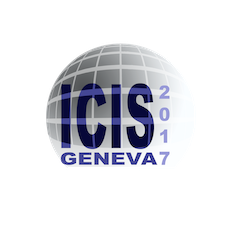Speaker
Description
The upcoming FAIR facility (Facility for Antiproton and Ion Research) will provide wide opportunities for investigation and research programs in different branches of science including antiproton physics, bio and material research, nuclear astrophysics and many others. A significant part of these programs require high intensity primary beams of heavy ions: $^{197}$Au, $^{208}$Pb, $^{209}$Bi and especially $^{238}$U with duty cycle up to 2.7 Hz.
The production of high current Au, Pb and Bi beams with vacuum arc ion sources is in developing phase. It is limited by the injection requirements into the RFQ (radio frequency quadrupole) on one hand side (the requested charge state for ions is 4+ or higher) and by physical properties of the materials on the other hand side (these metals are soft and fusible with relatively low melting point, that makes the production of 4+ ions challenging). Using composite materials, an alloy or a mixture of the desired element with a more refractory metal, instead of pure metals in the cathodes of the ion source dramatically improves the production of 4+ ions in the plasma for Au, Pb and Bi and allows providing high current ion beams for operation. Nevertheless, the operation duty cycle at the moment is limited to maximum 1 Hz. At higher duty cycles a drastic drop in the ion beam quality is observed.
In the case of uranium, the high current operation, producing U$^{4+}$ ion beam, is well established with 1 Hz. However, by increasing the duty cycle by a factor of 2.7 notable reduction of the ion source performance and pulse-to-pulse stability are observed. Moreover, the frequency of occurrence for such disturbing effects as high voltage breakdowns in the extraction system and ignition failures in cathodes is dramatically increased.
In this work the problematic of increasing the operation duty cycle for heavy elements to 2.7 Hz is considered in details. The possible ways to reach the requirements of future FAIR experiments especially for uranium beam are discussed.
